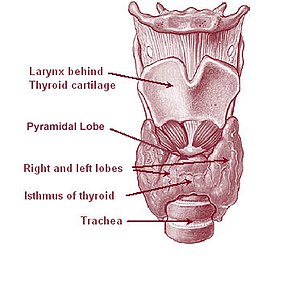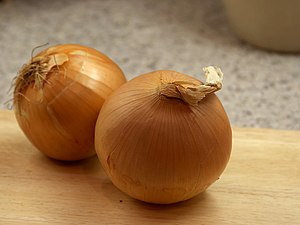The following post on clinical laboratory procedures is contributed by Pete Farmer, who holds advanced degrees in research biology and history, and is also an RN and EMT. For Part I of the series, click HERE.
Thank you, Pete, for this practical series.
* * *
Once you have obtained a light microscope and familiarized yourself with it, you are ready to do some simple sample preparation and staining techniques. Before beginning, remember that microscopy is a mature scientific and technical field with a sizeable body of knowledge that takes many years of dedicated and diligent study to master. Know your limits, and don’t hesitate to ask for assistance from a specialist or expert when you need it.
Sample preparation is essential to obtaining useable, rigorous, and reliable results. As stated in a previous installment of this series, the finest optical equipment is of little benefit if the sample is improperly prepared; conversely, modest equipment can out-perform its price if the specimen to be visualized is prepared carefully and with attention to detail.
The following discussion pertains (unless noted) to preparations involving slides, i.e., mounting, fixation, staining, and cover-slipping of a sectioned specimen on a glass slide. Thus prepared, the slide is placed upon the microscope stage, from which it can be visualized. Before beginning, the microscopist will need to assemble the necessary supplies. Typically, these are obtained from a scientific supply house, such as Carolina Biological Supply, Fisher Scientific, or similar. What supplies you require will depend on what microscopy procedures you wish to perform. Microscopy for general/basic science (see endnote) applications can be ordered from the above suppliers; materials for specialized clinical applications of the kind done by a pathologist may require a different supplier. Some of the many variables affecting your choice include the following:
What material are you preparing?
How thin does your section (thin slice) of material have to be in order to be magnified successfully? Remember, light must be transmitted through the section for visualization to occur (if you do not know the answer, you should consult a reference).
Does the material to be sectioned require any pretreatment in chemical solution or other advanced preparation? Some materials are too soft or too porous to section properly unless pretreated.
Does your procedure require a specimen of uniform thickness? If so, how do you plan to assure such thickness?
Does your specimen require immobilization upon the surface of the slide, so that it does not move during visualization? Remember, at extreme magnification, small movements of your specimen may displace it from the field of vision.
Does your specimen require chemical (use of a chemical agent which bonds with the constituents of a cell or tissue and “fixes” or holds them, in place) or heat (use of heat for the same purpose) fixation?
How many sections (slices) of the specimen are required? Must they be of uniform thickness and dimensions? If so, you may wish to invest in a microtome, a device for cutting extremely thin slices, or sections, for use in microscopy. For simpler tissue preparations, a razor is often sufficient. For some types of samples, such as aqueous (water) solutions containing microbes, no sectioning is required prior to making the slide.
Will your slides, once successfully prepared, have to be stored and maintained for future reference, or are they for one-time use only? The choice affects not only your time and expense, but what supplies you will need on hand.
These are just some of the concerns facing the laboratory microscopist. If you are a healthcare provider operating in a remote location, adjust your parameters accordingly.
However, let us walk before we run; before one can do microscopy in the field, one should be able to do it in a well-equipped laboratory. We’ll start simply and build upon that.
First, decide what it is your wish to examine; second, assemble the necessary supplies; third, do a practice run-through or dry run; fourth, perform the procedure. Proceed slowly and carefully, be methodical. Microscopy requires precision, care, and meticulousness. Hurrying or being careless can damage your equipment and ruin your sample. Time and repetition will improve your technique, and thus your speed.
Basic Equipment
Standard mass-produced slides are usually made of glass or plastic, and typically range from 1-1.2 mm in thickness, and 25x75mm rectangular dimensions. For working with higher-power objectives and condensers, slide thickness should be in the 0.8-1mm range. There are two types in general use – the flat slide and the well or depression slide. The former is completely flat, the latter has a well or hollowed out area designed to hold a drop of liquid. Slides are generally sold in boxes of 72, and are disposable and recycled for use in a waste glass or “sharps” container. For an incremental increase in cost, slides with a frosted (roughened area to permit writing) section to one side, may be obtained. These are more easily labeled than plain glass sides.
(Note: scientific supply houses, histology suppliers, and others vendors offer prepared, premade slides for reference or educational use; these contain tissue sections or other samples which have been mounted, fixed, and stained to allow permanent storage at room temperature. These are much more expensive than plain glass slides. Do not confuse the two).
The cover slip (or glass) is a thin, typically square piece of disposable optical glass or plastic, which is placed over the top of a drop of water or liquid on the slide. Water (aqueous) solutions have surface tension; a drop of water sitting on a glass slide is thus hemispherical in shape, not flat. The cover glass flattens out the water or specimen, confining it to a single optical plane, allowing higher magnification and better resolution than would otherwise be possible, and also protects the objective lens from being immersed in the drop and getting wet. Cover slips are commonly available in two thicknesses, number one (0.13-0.17mm) and number two (0.17-0.25mm). The former are used for oil-immersion and other high resolution applications, the latter for general use. Cover glasses, which measure 20x20mm, are sold by the ounce (~ 120 per oz.) and are easily broken. With care, cover slips can be gently washed and reused multiple times.
Sectioning, as noted above, is done for solid tissue or other non-liquid samples – typically with a razor blade or microtome. If the latter is used, specialized histology techniques for sample preparation are required. In brief, most biological specimens are neither hard nor rigid enough to permit accurate, precise sectioning. Even those specimens which meet these criteria may deform under cutting or degrade too quickly to be properly visualized. Especially if one is attempting to visualize living or recently living cells or tissues, these are subject to rapid degradation via autolysis (enzymatic breakdown) and decomposition once removed from the in vivo (living) environment of the host organism.
Histological preparation, therefore, is done with several aims in mind. First, the goal is physical stabilization of the sample, such that it can be sectioned cleanly and with minimal deformation; second, preservation and protection of the sample at the tissue and cellular level sufficient to allow the needed observations to be made; and thirdly, to provide color or other contrast to make visual observation more valuable. Microscopists have developed many specific methods over the years for attaining these goals; these are summarized at the following link on histology: (http://en.wikipedia.org/wiki/Histology#Embedding). Read this link before continuing; space does not permit a detailed discussion of these methods. The most important messages for the would-be clinical microscopist are that sample preparation often makes the difference between success and failure, and that the histological techniques chosen are dependent on what the sample is (or is suspected to be), how it is to be visualized or studied, and what you hope to learn from it. You are going to have to do your research and due diligence; there is no “one size fits all” solution. Microscopy, like any scientific or technical endeavor, requires problem solving.
Glass pipettes or water-droppers are used to transfer drops of solution from containers to the slide. For non-precision applications, the basic water dropper is adequate. Pipettes and droppers are available in reusable or disposable styles. Be sure to have several rubber bulbs on hand, and don’t forget to retain them when you clean or discard a pipette or dropper.
If you plan to stain and/or counter-stain your specimen, you will need one or more solvent containers in which to immerse your slides. Wheaton Coplin staining jars, such as those from Sigma-Aldrich (#S5516-6EA, http://www.sigmaaldrich.com/catalog/) are representative of the kind of glass container used for small-scale microscopy and sample preparation applications. Typically, once the section is affixed to the slide (air drying or gentle heat are often used), it can be stained. After a predetermined time immersed in the stain, the slide is “washed” in a solvent such as a water-alcohol solution, to rinse off excess coloring agent. It may undergo other steps or may then be cover-slipped and viewed depending on the specific procedure being done. If budgetary concerns are an issue, a simple Pyrex casserole baking dish with cover is a viable substitute for a purpose-designed staining jar.
A Bunsen burner or other controllable flame source is essential for preparing a specimen to be viewed or stained. You will also need a pair of slide clamps or forceps to hold the slide while heating it. As noted, gentle heat is often used to dehydrate or dry a section floating in a drop or two of water on a slide, thereby affixing it to the slide. If you are a novice, plan on some practice using some “waste: sections (i.e., ones you can afford to lose) to get the hang of this technique. Overheat the slide, and you’ll lose or damage your section; heat it too gently and it will fail to adhere to the slide face and float away when you try to stain or rinse it. If practice fails to develop your technique, you may wish to invest in pre-coated slides, which come from the factory with a thin layer of chemical pretreatment which vastly improves the ability of the slide to “hold” a specimen. Coating slides in this manner can also be done in the lab, but requires an additional outlay in supplies and equipment, i.e. chemical reagents, dishes, a drying oven, etc. Finally, air drying – while more time-consuming than heating – works well as a means of affixing a specimen to the slide. If you do not wish to purchase a Bunsen burner, which requires a piped-in source of natural gas, a candle or other small flame is suitable. A clean-burning flame is preferred, since it will impart less vision-impairing soot to the slide as it is heated.
Finally, plan on having a supply of the following items available in your work area: cotton swabs, tooth picks, paper towels or laboratory wipes, tweezers or forceps, a box of disposable razor blades, a surface upon which to prepare your specimen (can be purchased or may use a plastic reusable cutting board), plus the necessary solvents, stains and whatever other chemicals your procedures require, plus laboratory glassware in which to use them. Do your homework, and plan ahead. This list is not exhaustive, and isn’t intended to replace advanced preparation on your part! If you are intimidated by the prospect of equipping yourself piecemeal, contact a reputable scientific supply house and request assistance. Outfitting scientists and investigators is their business; they will be happy to help you. Most high school or undergraduate-level college biology instructors are good resources also.
In the next installment of this series, we will tackle a basic staining procedure, and begin a practical diagnostic procedure using your microscope.
———————-
Endnote: The term “basic sciences” refers to the fields of biology, chemistry, physics, and other natural/physical fields of inquiry, as opposed to applied science/engineering fields such as medicine and the different fields of engineering (chemical, electrical, computer, ceramic, mechanical, aeronautical-aerospace, etc.).
References cited:
http://www.microscope-microscope.org/basic/preparing-microscope-slides.htm
http://www.microscope-microscope.org/basic/preparing-microscope-slides.htm
www.sigma-aldrich.com
Copyright © 2011 Peter Farmer















